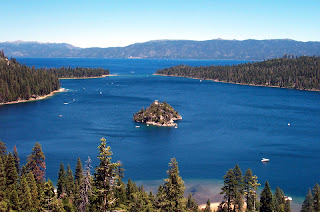The Hydrosphere represents one component of Earth’s system. The other components are Lithosphere, Atmosphere, and Biosphere. The term Hydrosphere in Greek means water ball and as you can see our planet viewed from the outer space is an oblate spheroid with blue appearance that’s why our planet is called “The Blue Planet”. It consists chiefly of the oceans, but exactly it includes clouds, inland seas, lakes, rivers and underground waters.
If truth be told, about 71% of our planet is covered with water and almost 97% of this is found in the oceans as saltwater while the remaining 3% is freshwater in the form of ice caps, glaciers, ice bergs, and deep ground water which are not easy to acquire. Therefore just a sheer 0.41% of all waters on Earth are readily accessible for man’s survival.
Below are just some of the very essential functions of water in the Hydrosphere.
- Provides habitat for plants and animals
The hydrosphere provides home for many animals and plants to live.
- · Cells are partly composed of water
To function normally, Living organisms need water. Without water, cells would not be capable to perform their normal activities and life would not be possible. In point of fact, living organisms is made up of almost 75% water. Without water humans would die in a week.
- Sources of food
Food attained from freshwater bodies could consist of crustaceans, aquatic plants and fish.
- Human necessities
Humans use water in many ways. It may be for drinking, washing, cleaning, cooking, etc.
- Chemical Uses
Water is the universal solvent. In chemical reactions, it is used as a solvent or reactant and less commonly as a solute or catalyst.
- Agriculture
Water taken from water bodies is an important source of irrigation, which is a key component to produce enough food. Like United States who uses 30% of freshwater for irrigation.
- Water Industry
There are industries that uses water from bodies of water to provide drinking water and services like sewage treatment to other industries and also households.
- Energy Source
Water could be utilized for power generation. Hydroelectric power comes from water driving a water turbine connected to a generator. Hydroelectricity is electricity obtained from hydropower. Hydroelectricity is a low-cost, non-polluting, renewable energy source.
- Affects the Climate system
Oceans are large reservoir of chemicals that can contribute to the greenhouse effect in the atmosphere and energy absorbing 90% of the solar radiation which hits the surface. They also work with the atmosphere to redistribute the energy received from the sun such that the heat in the tropics, where a lot of energy is received from the sun, is transferred toward the poles, where heat is generally lost to space. The presence of large bodies of liquid water and the atmosphere restrict the range of temperature fluctuations on Earth. (http://www.weegy.com/home.aspx?ConversationId=A18F0269)
- Used as heat transfer fluids
Water and steam are used as heat transfer fluids in diverse heat exchange systems, because of its availability and high heat capacity and used as a coolant and for heating. In almost all electric power stations, water is the coolant, which vaporizes and drives steam turbines to drive generators.
Yet even though our planet’s Hydrosphere plays a big part in our survival, we repeatedly abused it and take it for granted. When will we open our eyes and start to act as responsible caretaker of our God-given resources? Water conservation and protection only come up into our minds in times of crisis and dry seasons. Some didn’t even think how long it will be there to sustain our needs.
So starting now let’s be in charge, conscientious and liable not only to our bodies of water but as well as our other God-given resources.



















